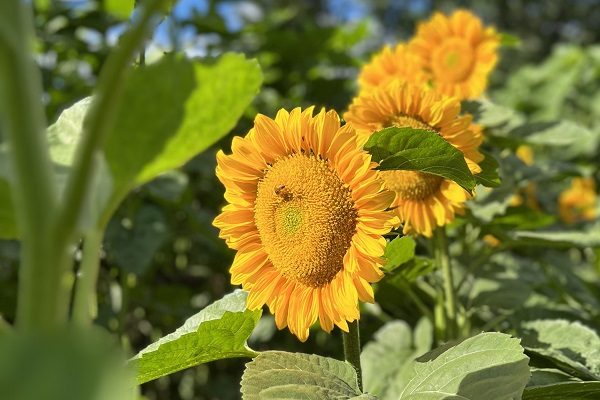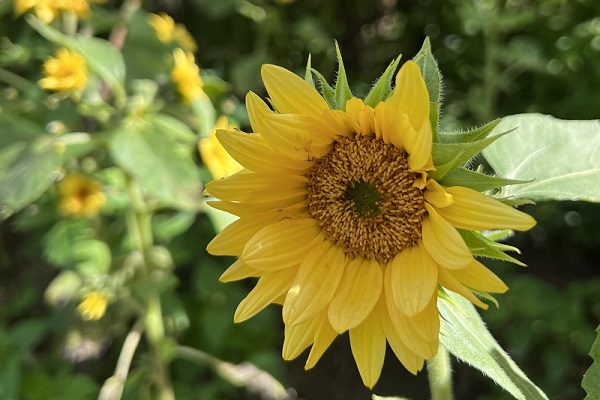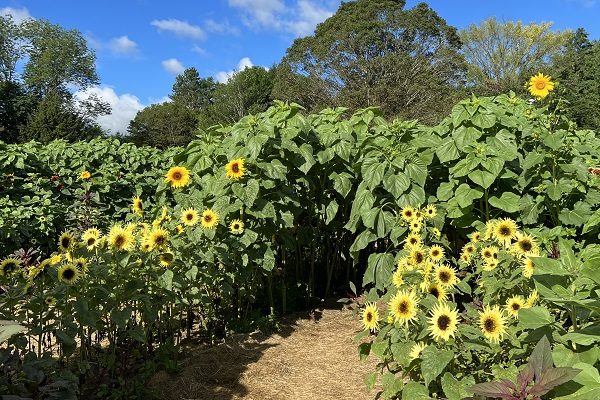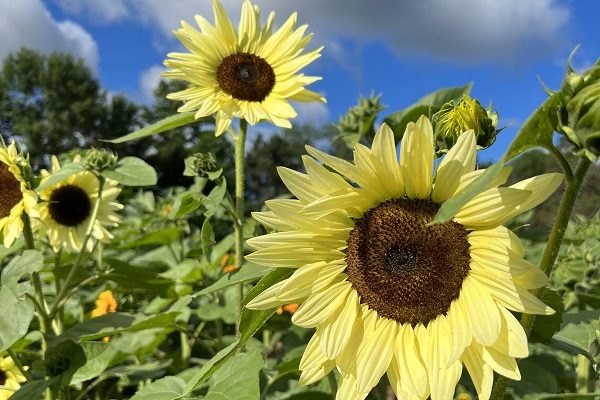![]()
Sunflower House
The 6th annual Sunflower House at Billings Farm & Museum has opened early due to favorable weather! At its peak in August, it is a breathtaking and magical sight to behold. A colorful palette ranging from orange and red to golden yellow will welcome guests to roam, play, and take lots of photographs. Billed as the largest sunflower house in the United States with a footprint of 20,000 square feet, guests are invited to wander the pathways through the ever-evolving living floral house.
Guests are welcome to wander the pathways and meander through “rooms” and “hallways” created by sunflower stalks and blooms. Zigzagging paths ensure maximum impact of eastward-facing blooms, offering breathtaking pockets or vistas at every turn.
Curated by the Woodstock Inn & Resort’s Master Gardener, Ben Pauly, and Kelly Way Gardens Manager, Taylor Hiers, this year’s Sunflower House will feature over 50 varieties including 13 sunflower types considered “showstoppers” that will wow you. From the towering giants that reach heights of up to 14 feet, to the sweet, small blooms that stand 1 foot tall, each flower contributes to the living work of art.
Delightful flower names such as Lemon Cutie, Starburst Panache, Buttercream, Feed the Birds, and Just Crazy add further joy to the experience. Complimented by 50 companion annuals, the garden bursts with a kaleidoscope of colors, ranging from soft yellows to deep maroons with every shade of rust, orange, yellow, and red in between.
This vibrant canvas evolves with each passing day. With the early arrival of flowers this year the peak is expected in August, weather permitting.
Make sure to bring your camera for memorable shots you won’t want to miss.
Interested in a private photo session in the Sunflower House for yourself or your family? Schedule a private photo session today.
The Billings Farmstead Gardens
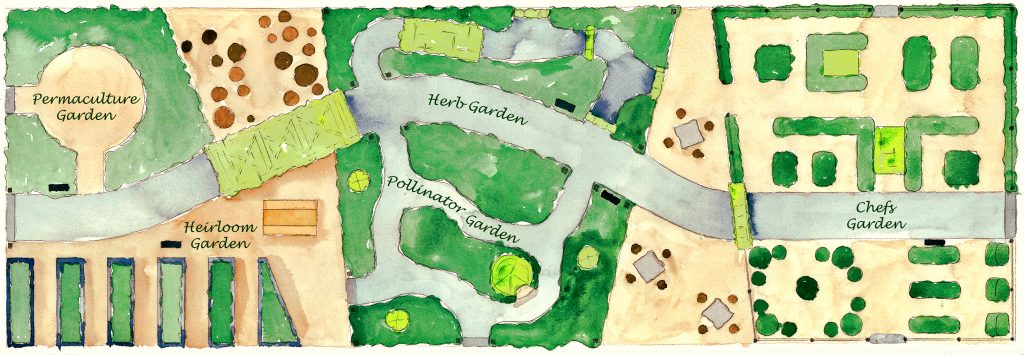 The 8,000-square foot Billings Farmstead Gardens features:
The 8,000-square foot Billings Farmstead Gardens features:
- Seven distinct gardens in one cohesive garden experience
- Paths, trellises, arches and tunnels which will create a sense of magic and wonder where you can explore, relax, learn, gather, and play
- A variety of gardening methods and techniques that can be used in home gardens
Heirloom Garden
Learn what was planted and maintained in a kitchen garden by the daughters of Farm Manager, George Aiken in the 1890’s. History meets local heritage with heirloom plants selected from an 1886 Billings Farm seed order, including Vermont varieties: Bull Noes Peppers, Bear Paw Popcorn, and Tall Telephone Peas.
Victory Garden
During WWI & WWII, food became scarce in the United States. With much of the population overseas fighting, few workers remained to care for the country’s farms. To solve this problem, the government encouraged citizens to plant “Victory Gardens” in their own backyards and in public places like parks and schools. By growing their own food, people took pressure off farms and the canning industry, whose metal went to support the war effort. By the end of WWI, over five million Victory Gardens existed in the U.S. During WWII that number rose to 18 million. Victory Gardens proved so successful that at one time they produced about 1/3 of the vegetables in this country.
At Billings Farm, when many of the laborers went to war, the “Woman’s Land Army of Vermont” sent volunteers to work the farm. These “farmerettes” helped keep Billings Farm running during WWI. During WWII, the farm offered over 3 acres of land for people to plant their own Victory Gardens. Locals harvested food from over 40 plots on the farm.
Historic gardens of WWI (farmerettes) and WWII (Victory Gardens) are recreated in this area of our heirloom gardens. You can observe the growing cycle of victory garden favorites. We will be growing: Sweet corn, lettuce, russet potatoes, onion, cucumbers, carrots, summer squash, green beans, parsnip, melons, cauliflower, kale, spinach, radishes, peas, beets, eggplant, okra, kohlrabi, swiss chard, pole beans, and broccoli.
Pollinator Garden
This garden invites bees, butterflies, birds, and beneficial insects to alight on perennial plants and flowers.
Learn about the importance of pollinators and see how you can build a bee houses, hummingbird feeders, Damp salt lick for butterflies and bees. Learn to grow pollinator friendly plants like: bee balm, milkweed, butterfly bush, butterfly weed, oregano, borage, lavender, broccoli, fennel, nasturtium, honeysuckle, coral bells, mealy cup sage, and larkspur.
Permaculture Garden
This low-maintenance, self-caring garden mimics the balance and beneficial relationships found in nature through perennial plantings.
Chef’s & Pizza Gardens
Discover delicious ingredients for fresh, healthy, home-grown meals. Did you know you can find everything you need to make a pizza on a farm? The plants in this garden are all ingredients for the perfect pie. Wheat gets ground into flour for the crust, tomatoes become sauce, and herbs and veggies make for tasty toppings. Beyond the garden, see the fields of hay which feeds our cows. Their milk becomes delicious cheese—great for a pizza! We will be growing wheat, tomatoes, oregano, basil, savory, bell peppers, onion, garlic (planted in the fall).
Herb Garden
This garden is filled with herbs for cooking, tea, and medicinal use in a mix of annuals and perennials.
Garden Shed
Seasonal gardening programs take place in and around the Garden Shed. Learn about the herbs, heirloom vegetables, and apples grown here and how they were preserved to last the winter. Enjoy Herbal Tea Happy Hours or just lounging on our shaded Garden Shed porch.

Want to get involved? Help us sustain the gardens with a gift of support or by becoming a volunteer.

